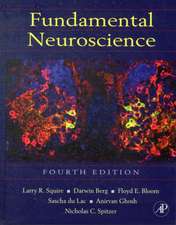Spasticity: Mechanisms and Management
Editat de Alfred F. Thilmann, David J. Burke, William Z. Rymeren Limba Engleză Paperback – 30 dec 2011
Preț: 725.79 lei
Preț vechi: 763.99 lei
-5% Nou
Puncte Express: 1089
Preț estimativ în valută:
138.90€ • 144.48$ • 114.67£
138.90€ • 144.48$ • 114.67£
Carte tipărită la comandă
Livrare economică 15-29 aprilie
Preluare comenzi: 021 569.72.76
Specificații
ISBN-13: 9783642783692
ISBN-10: 3642783694
Pagini: 480
Ilustrații: XIV, 463 p.
Dimensiuni: 155 x 235 x 25 mm
Greutate: 0.67 kg
Ediția:Softcover reprint of the original 1st ed. 1993
Editura: Springer Berlin, Heidelberg
Colecția Springer
Locul publicării:Berlin, Heidelberg, Germany
ISBN-10: 3642783694
Pagini: 480
Ilustrații: XIV, 463 p.
Dimensiuni: 155 x 235 x 25 mm
Greutate: 0.67 kg
Ediția:Softcover reprint of the original 1st ed. 1993
Editura: Springer Berlin, Heidelberg
Colecția Springer
Locul publicării:Berlin, Heidelberg, Germany
Public țintă
Professional/practitionerCuprins
Spasticity: History, Definitions, and Usage of the Term.- I Descending Control of Movement.- Organisation of Cortico-motoneuronal Projections from the Primary Motor Cortex: Evidence for Task-Related Function in Monkey and in Man.- Investigation of Descending Motor Pathways in Man.- Propriospinal Transmission of Voluntary Movement in Humans.- The Site of Activation of the Corticospinal System by Transcranial Magnetic and Electrical Stimulation of the Human Mortor Cortex.- Plasticity of the Human Motor Cortex.- Discussion Summary.- Discussion Summary.- II Disturbance of Voluntary Movement.- The Role of the Corticospinal Tract in Spasticity Studied by Magnetic Brain Stimulation.- Do Rapidly Conducting Ipsilateral Corticospinal Pathways Contribute to Recovery in Adult Hemiplegia?.- Strength Changes in Hemiparesis: Measurements and Mechanisms.- Factors Underlying Abnormal Posture and Movement in Spastic Hemiparesis.- Disturbances of Voluntary Arm Movement in Human Spasticity: The Relative Importance of Paresis and Muscle Hypertonia.- Spastic Movement Disorder: Similarities and Differences in Children and Adults.- Hyper-reflexia and Disordered Voluntary Movement.- Discussion Summary.- Discussion Summary.- III Spinal Pathophysiology: Animal Models.- Regulated Properties of Motoneurons and Primary Afferents: New Aspects on Possible Spinal Mechanisms Underlying Spasticity.- Functional Properties of the Neuromuscular System and Force Gradation.- Development of an Animal Model for the Study of Spinal Spasticity.- Monoaminergic Inhibitory Control of Spinal Interneurons.- Discussion Summary.- IV Reflex Disturbances in Spasticity: Movement Studies.- Pathological Changes in Spastic Muscle Reflexes Evoked by Passive Stretch or Tendon Taps.- Spastic Paresis: Reflex Activity and Muscle Tone in Elbow Muscles During Passive and Active Motor Tasks.- Discussion Summary.- V Reflex Disturbances in Spasticity: Electrophysiological Studies.- Methodological Problems in the Hoffmann Reflex Study of Spasticity.- Signs of the Upper Motoneuron Syndrome in Relation to Soleus Hoffmann Reflex Tests.- Pathophysiological Mechanisms of Spasticity at the Spinal Cord Level.- Dynamics of Reflex Excitability Following Intrathecal Baclofen Administration in Patients with Severe Spastic Syndromes.- Task-Dependent Spinal Inhibition in Spastic Hemiplegia.- Late Flexion Reflex in Paraplegic Patients: Evidence for a Spinal Stepping Generator.- Kinematics of the Cat Hindlimb After Spinal Cord Hemisection.- Discussion Summary.- Discussion Summary.- VI Treatment and Rehabilitation.- Spasticity of the Lower Urinary Tract: Therapeutic Strategies.- New Developments in the Medical Treatment of Spasticity.- Muscle Relaxant Action of Excitatory Amino Acid Antagonists.- Effect of Intrathecal Baclofen on Monosynaptic Reflex in Man.- Comparison of Cyproheptadine, Clonidine and Baclofen on the Modulation of Gait Pattern in Subjects with Spinal Cord Injury.- Neurophysiological Mechanisms of Spasticity Modification by Physiotherapy.- Is Rehabilitation Effective in Spastic Syndromes?.- Discussion Summary.











